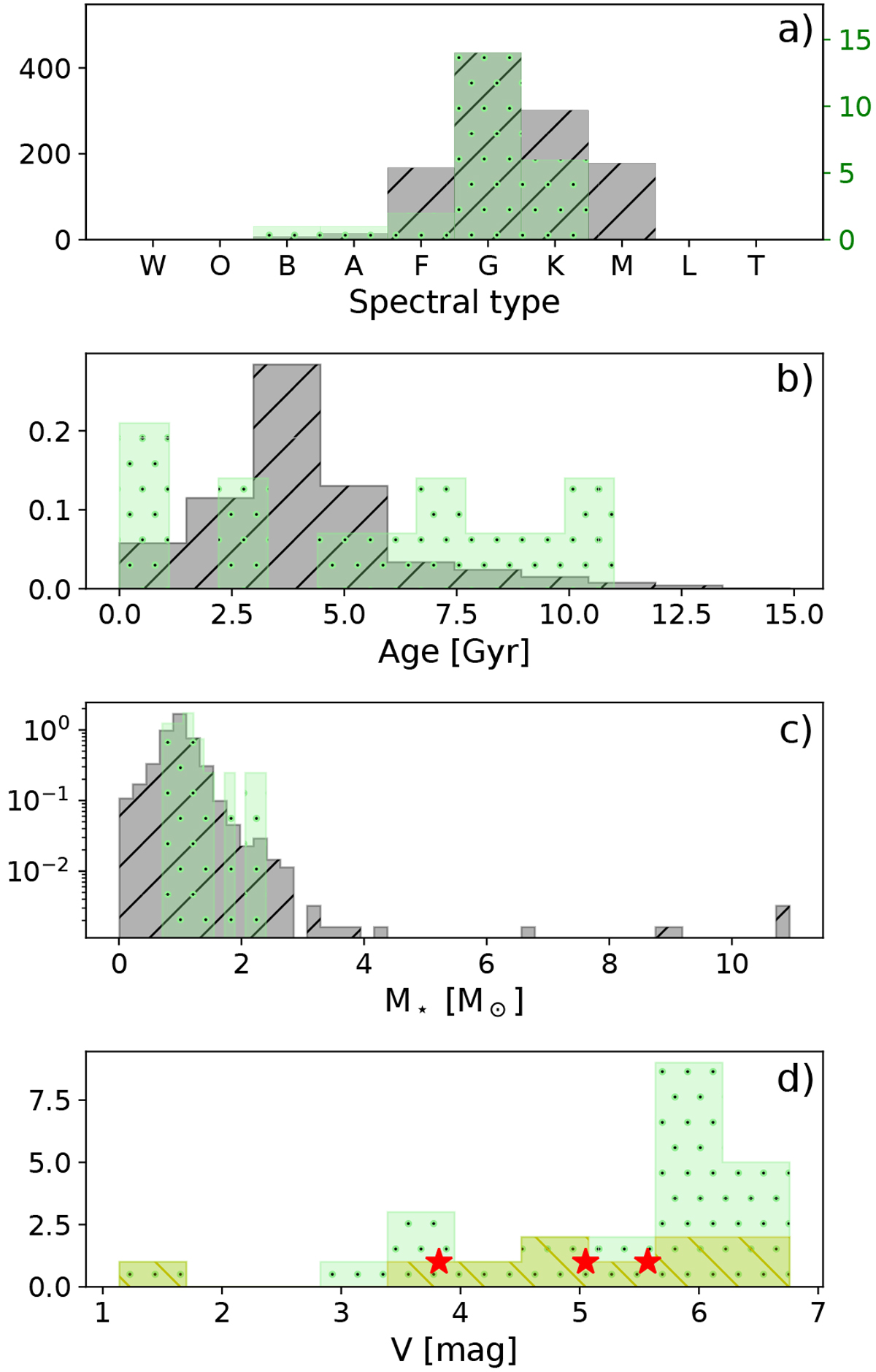Fig. 7

Properties of the stars hosting Roman-accessible planets. Panel a: total count of planet-hosting stars of each spectral type. Panel b: normalized distributions of the stellar age. Panel c: normalized distributions of the stellar mass. Grey bars with diagonal ‘/’ hatching correspond to the total population of confirmed exoplanets. Over-plotted semi-transparent green bars with dotted hatching correspond to exoplanets that are Roman-accessible in the optimistic CGI configuration, with Paccess > 25% and V < 7 mag. We note that these parameters are not available for all of the confirmed exoplanets in the NASA Exoplanet Archive. The spectral type is available for all of the 24 stars hosting Roman-accessible planets, the stellar age is known for 13 of them, and the metallicity for 16 stars. Panel d: count of Roman-accessible-planet host stars of different optical magnitudes in each CGI configuration. Green bars with dotted hatching correspond to the optimistic scenario. Semi-transparent yellow bars with diagonal ‘\’ hatching correspond to the intermediate scenario. Red stars mark the three stars hosting Roman-accessible planets in the pessimistic scenario.
Current usage metrics show cumulative count of Article Views (full-text article views including HTML views, PDF and ePub downloads, according to the available data) and Abstracts Views on Vision4Press platform.
Data correspond to usage on the plateform after 2015. The current usage metrics is available 48-96 hours after online publication and is updated daily on week days.
Initial download of the metrics may take a while.


